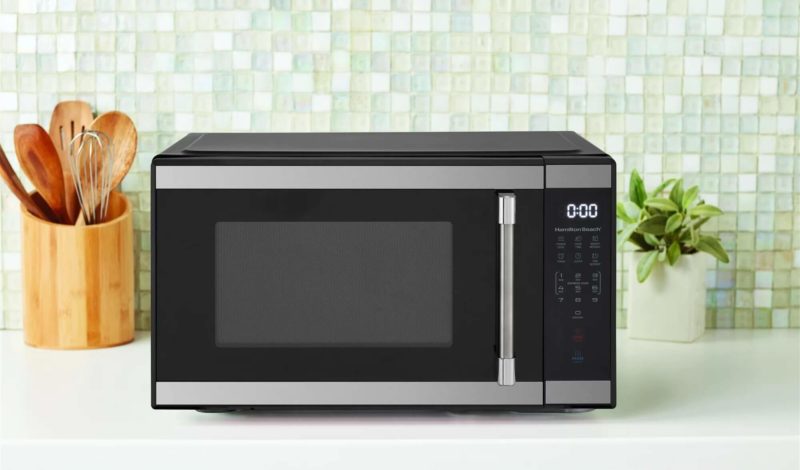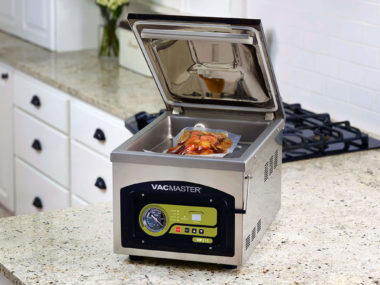Are you having trouble with your Hamilton Beach microwave not heating? If so, you're not alone. Many people experience this problem and it can be a major inconvenience. Fortunately, there are some quick fixes that you can try before taking the microwave to a repair shop.
In this article, we'll discuss some of the potential causes of a Hamilton Beach microwave not heating and provide some tips for troubleshooting the issue.
Troubleshooting and Diagnosis
When a Hamilton Beach microwave oven is not heating, the cause can be a faulty diode, defective door switch, burnt-out magnetron, burnt out high voltage capacitor, failed high voltage transformer, blown thermal fuse, tripped thermoprotector, or tripped control board. To determine the cause of your microwave's problem, you should first try to troubleshoot and diagnose the issue.
Faulty Diode
If your Hamilton Beach microwave is not heating, one of the most common causes is a faulty diode. A diode is a two-terminal electronic component that allows electricity to flow in one direction only. The diode on your microwave is responsible for converting the 120V AC to 12V DC and it can become worn over time. If the diode is faulty, it will prevent the microwave from functioning correctly.
To check for a faulty diode, you will need to use a multimeter. First, unplug the microwave and make sure the unit is completely powered off. Next, remove the access panel from the back of the microwave and locate the diode. Use the multimeter to test the continuity of the diode. If there is no continuity, then you likely have a faulty diode, which needs to be replaced.
You should also check the wiring to make sure everything is connected properly. Once the faulty diode has been identified and replaced, your microwave should be able to heat food again.
It’s important to remember to always disconnect the power before attempting any repairs on your Hamilton Beach microwave.
Burnt Out Magnetron
If your Hamilton Beach microwave is not heating, then the magnetron could be the culprit. The magnetron is an essential component of any microwave, as it is the part that generates the microwaves to heat your food. If it is not working properly, then your microwave will not heat anything.
To diagnose if your magnetron is burned out, first unplug the unit and remove the rear panel. Look for a silver cylinder with wires attached to it and remove the wires, so you can inspect it. If the magnetron has a burnt or charred odor, then it is likely burned out and needs to be replaced.
Once you have confirmed that the magnetron is faulty, you will need to replace it with a new one. It's important to note that magnetrons are very sensitive, so it's best to get a replacement part from a qualified technician. Trying to fix it yourself can be dangerous and could lead to further damage to your appliance.
Burnt Out High Voltage Capacitor
If your Hamilton Beach microwave is not heating but is still running, then it could be a sign of a burned-out high-voltage capacitor.
High voltage capacitors are a key part of the microwave’s power system. They are used to store electrical energy and release it in a controlled manner. If the capacitor becomes damaged or burns out, then the microwave won’t heat up.
To check if this is the cause of the problem, unplug the unit from the wall outlet and remove the cover from the back of the microwave. Locate the high voltage capacitor, which should look like a metal cylinder with two metal terminals sticking out of one end.
Using an ohmmeter or multimeter, check for continuity between each terminal and ground. If there is no continuity, then the capacitor needs to be replaced.
Replacing a high voltage capacitor can be dangerous and should only be done by an experienced technician. It’s important to properly discharge the capacitor first before attempting any repair work. Once discharged, replace the old capacitor with a new one. Then reassemble the microwave and plug it back into the wall outlet to see if it is now heating correctly.
Failed High Voltage Transformer
A high-voltage transformer, also known as a magnetron transformer, is responsible for supplying power to the magnetron. If it fails, the magnetron will not be able to heat up the food.
The high-voltage transformer can be tested using an ohmmeter. If the resistance of the transformer is found to be high, it means that it has failed and needs to be replaced.
Another symptom of a failed high-voltage transformer is if it is producing sparks when powered on. In this case, the entire transformer should be replaced.
Defective Door Switch
If the door switch on your Hamilton Beach microwave is not working correctly, it can cause the unit to fail to heat up. If this is the case, you'll need to replace the defective switch.
Before doing so, make sure you disconnect the power source from the appliance. To remove the switch, use a Phillips screwdriver to unscrew the screws located at the back of the microwave. Carefully remove the door switch and replace it with a new one. Once you've done this, reconnect the power source and test if the microwave works properly.
If you're having difficulty finding a replacement switch, contact an authorized service provider or search online for a compatible part. Before replacing any part in your Hamilton Beach microwave, make sure to read all instructions provided with your replacement part carefully.
Blown Thermal Fuse
A thermal fuse is a safety device that protects your microwave from overheating. It monitors the temperature inside the appliance and trips when the temperature rises to an unsafe level. If the thermal fuse has been tripped, it needs to be replaced.
To check if the thermal fuse has been blown, you will need to access the rear of the microwave. Look for a small, cylindrical piece with two wires attached to it. Test it with a multimeter to check for continuity. If there is none, then the thermal fuse needs to be replaced.
When replacing the thermal fuse, you should always follow the manufacturer’s instructions. Make sure that the wires are connected correctly and that the new thermal fuse is the same as the one you are replacing.
In some cases, the thermal fuse may have been tripped by something other than an overheating issue, such as a power surge or a faulty door switch. If this is the case, you will need to find and address the underlying problem before replacing the fuse.
Tripped Thermoprotector
A thermoprotector, also known as a thermal fuse, is an important component in your microwave. It is designed to keep the oven from becoming dangerously hot, and it will trip if the temperature gets too high. When the thermoprotector trips, the microwave won’t heat.
To diagnose this issue, you will need to locate the thermoprotector, which is usually found behind the panel inside the oven cavity. You can then use a multimeter to check for continuity between the two terminals of the thermoprotector. If there is no continuity, then it is likely that the thermoprotector has tripped.
Unfortunately, you will need to replace the thermoprotector in order to repair the issue. This component is relatively inexpensive, but replacing it requires some technical expertise.
Be sure to follow all safety precautions when working on electrical components. Once you have replaced the thermoprotector, your microwave should be back up and running.
Microwave Door Sensors
The microwave door sensors are the most common cause of a microwave not heating. This is because they are responsible for sending the signal to the microwave’s control board when the door is closed.
When the door is opened, the sensors send a signal that tells the control board to stop the cooking cycle. If the sensors are faulty, then the microwave won’t heat as it won’t be receiving the signal to start the cooking cycle.
To check if this is the problem, you can use a multimeter to test for continuity across the two terminals on the sensor. If there isn’t any continuity, then you will need to replace the sensors.
Alternatively, you could use a piece of insulation tape or a paper clip to bypass the sensors. If this fixes the issue, then you will know that you need to replace them.
In either case, it is important to remember that microwaves are highly dangerous appliances and should only be worked on by an experienced professional. It is best to leave repairs of any kind to a qualified technician, as mistakes can be very costly and even hazardous.
Touchpad
If the microwave is not responding when you press the buttons, it’s possible that the touchpad needs to be replaced.
The touchpad is a membrane switch that contains a printed circuit board with a number of contact points on it. If any of these contact points fail, the microwave won't respond.
To check if this is the problem, you can test the resistance of the touchpad using a multimeter. If there is no resistance, then it's likely that the touchpad has failed and needs to be replaced.
Control Board
If none of the above components are at fault, you may need to replace the control board. The control board is the main component of your microwave, and it is responsible for controlling the power and timing of all other components. If it malfunctions, then the microwave will not be able to perform its normal functions.
To check if your control board is working properly, use a multimeter to measure the voltage in each component connected to it. If any part of the circuit is not getting the proper voltage, then you may need to replace the control board.
Replacing the control board is a complex task, and it requires a certain level of technical knowledge. If you are unsure about replacing the board yourself, we recommend consulting a professional technician for assistance.
Conclusion
If your Hamilton Beach microwave is not heating, the cause of the problem could be any of the components discussed above.
Before you attempt to repair it yourself, make sure to unplug the unit from the power source and take all necessary safety precautions. If you are not sure how to properly diagnose and fix the problem, it is best to contact a qualified technician for assistance.
With the right tools and knowledge, you can troubleshoot and repair the issue yourself in no time. Once all of these components have been inspected and/or replaced, your Hamilton Beach microwave should start heating up again.


